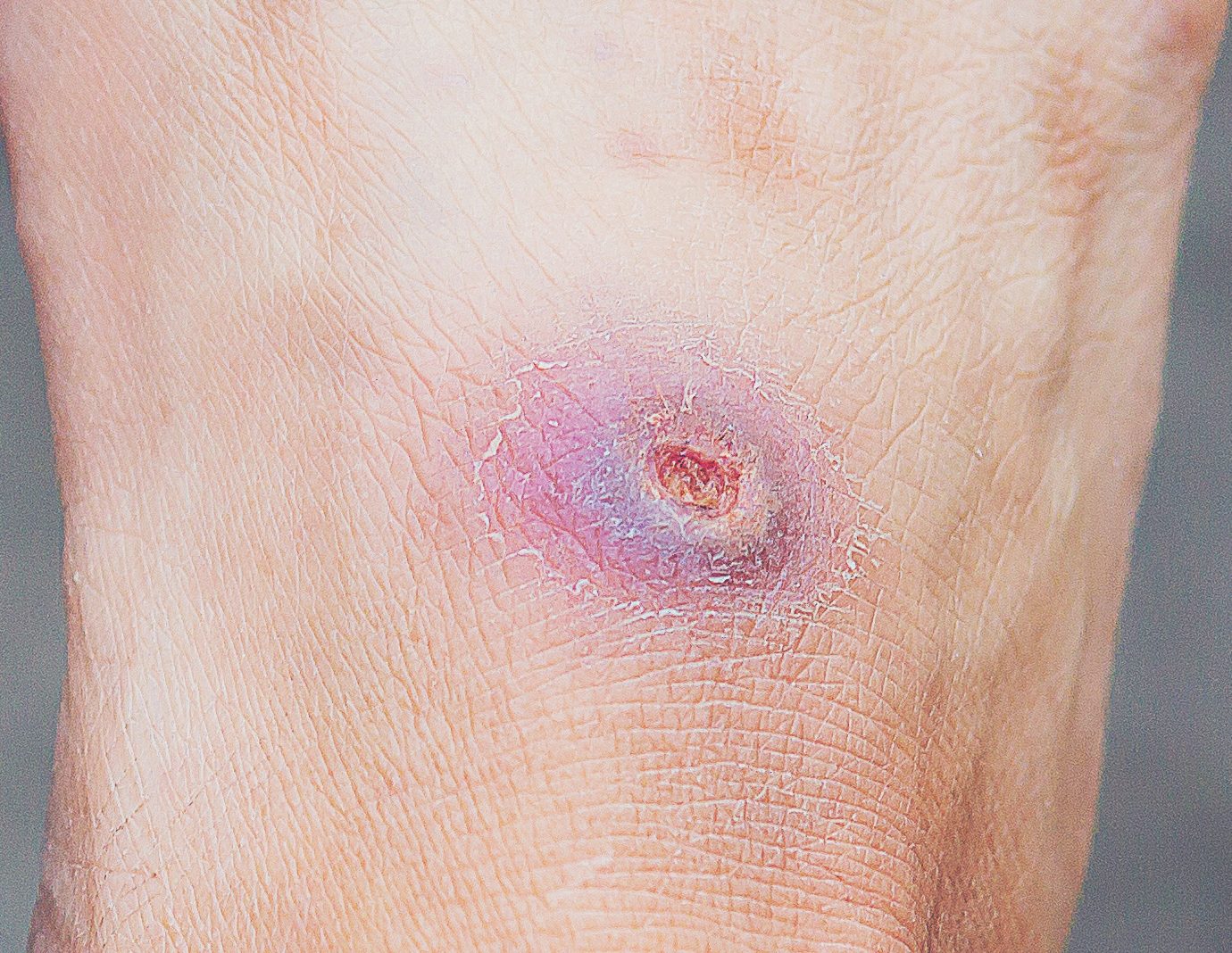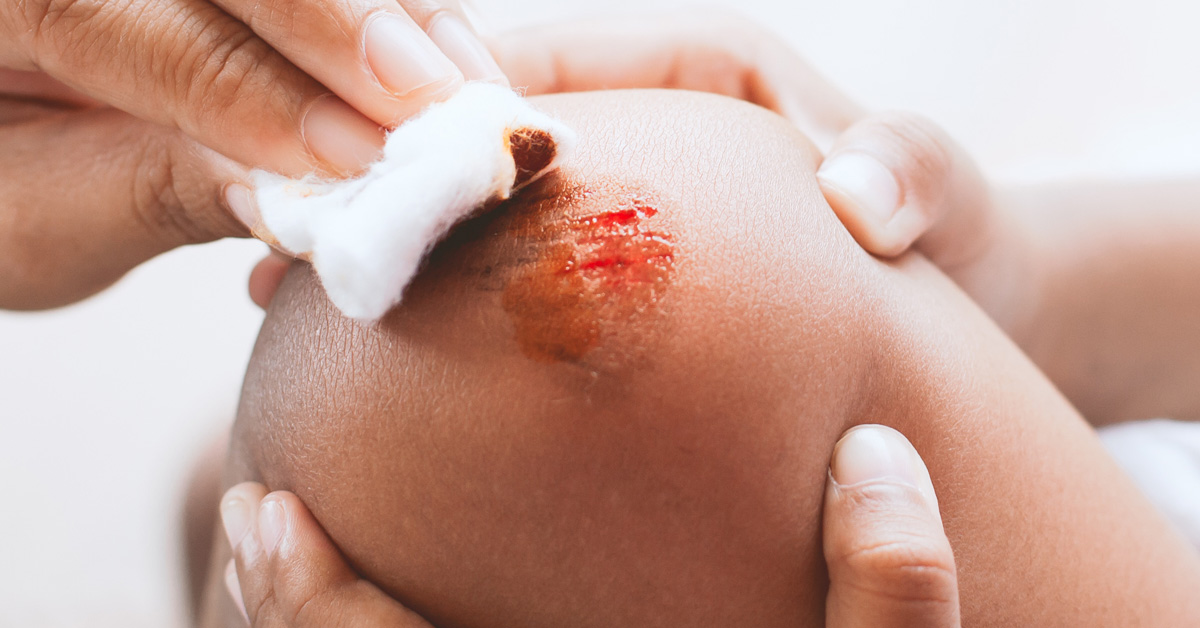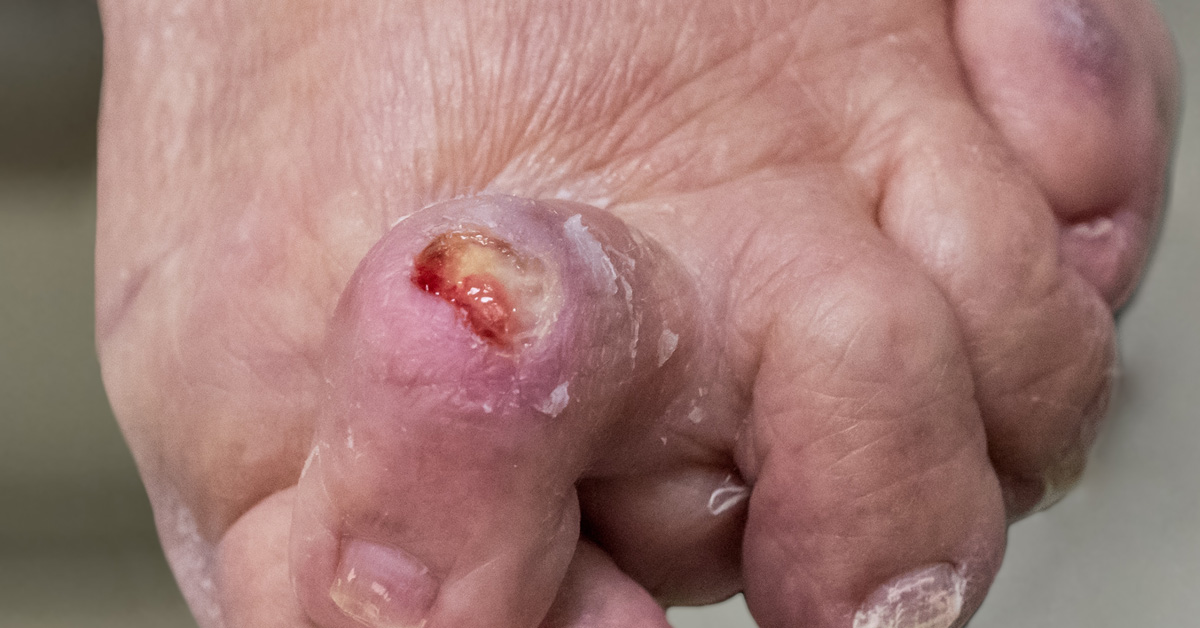Diabetic Foot Ulcers
What is a Diabetic Foot Ulcer?
An open wound or sore that won’t heal or keeps coming back is called an ulcer. If you have diabetes, you should always check your feet daily for any cuts, blisters, calluses, or breaks in the skin. You may have a condition called neuropathy that causes your feet to lose feeling due to nerve damage. If you have neuropathy, you may not know you have a scrape, cut, or opening in your skin that can possibly turn into a deep ulcer or infection, which can even lead to amputation. Diabetic foot ulcers affect up to 34% of diabetic patients during their lifetime. Prevention is very important for good foot health.

What Causes a Diabetic Foot Ulcer?
Ulcers on the feet caused by diabetes can take a long time to heal. It can sometimes take up to three months or longer. Diabetic foot ulcers can be caused by too much pressure on a certain part of your foot. There may be a need for special shoes to protect the wound and reduce pressure. Keeping your blood sugar at normal levels, taking your medicines as recommended, not smoking, eating well, and being active a few days a week can all help prevent nerve damage and the development of ulcers.
When Should I Call My Doctor?
Diabetes can cause ulcers on the feet that can be different sizes, shapes, and colors. The ulcer can start as a blister or a small, red, round hole in the skin. Around the edges of the wound, the skin may have grown thicker. This is called a callus. Most of the time, these ulcers are on the bottom of the foot. If you look at the colors in a wound, red means that the tissue is healthy. If you see tissue that is yellow or black, you should call your doctor for further treatment.
The best way to keep an eye on your feet and lower your risk of getting an ulcer is to have a podiatrist or doctor look at them and care for your toenails regularly. Don’t forget to check your feet every day. Use a hand-held mirror or ask a family member to help you. Keep your feet moisturized, but don’t use lotion between your toes, where bacteria like to grow.
Call your doctor if you have any of the signs or symptoms of infection listed below:
- Redness, warmth, or swelling around the wound
- Odor after the wound is cleansed
- Increased fluid draining from ulcer (pus)
- Fever or chills
- Increased pain
- Ulcer is yellow or black
How are Diabetic Foot Ulcers Treated?
If you have an ulcer on your foot, it is important for you to watch for signs and symptoms of infection and follow your doctor’s instructions. Earlier treatment reduces your risk of infection and amputation.
When treating your wound at home, you can follow these simple rules to prevent infection and accelerate healing. If you have any signs or symptoms of infection, call your doctor.
- Wash your hands to prevent infection.
- Cleanse the wound with AMERIGEL® Saline Wound Wash.
- Apply a thin layer of AMERIGEL Hydrogel Wound Dressing with a gloved finger or tongue depressor.
- Cover your wound with a sterile gauze pad. Your wound must be covered in order to heal properly. Wounds that are exposed to air heal more slowly because the surface cells dry out, and as a result, they are more susceptible to infection.
- Secure your dressing with roll gauze and gentle tape. Never use tape on the skin. Change the dressing daily, repeating steps until healed.
NOTE: If you are experiencing any symptoms suggestive of a medical emergency, always contact a physician or seek urgent care immediately.









